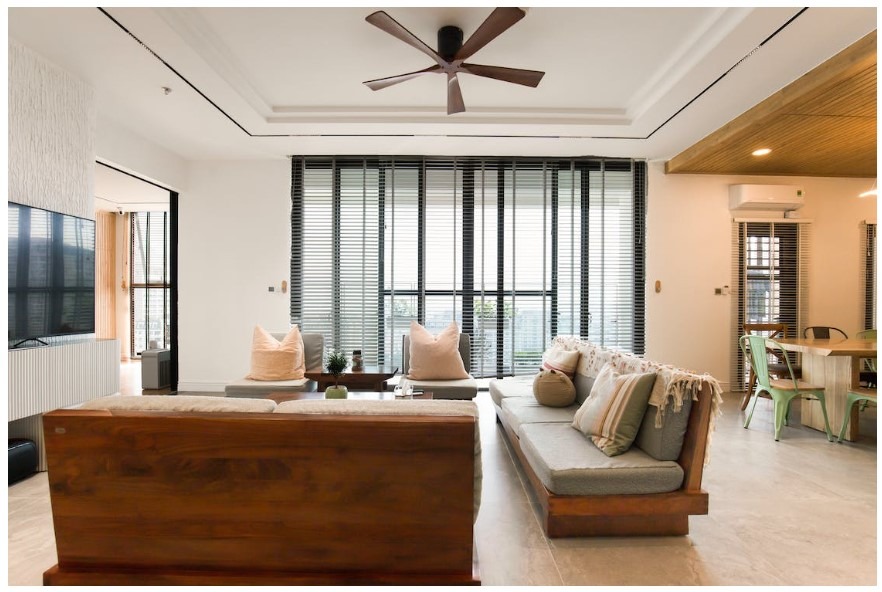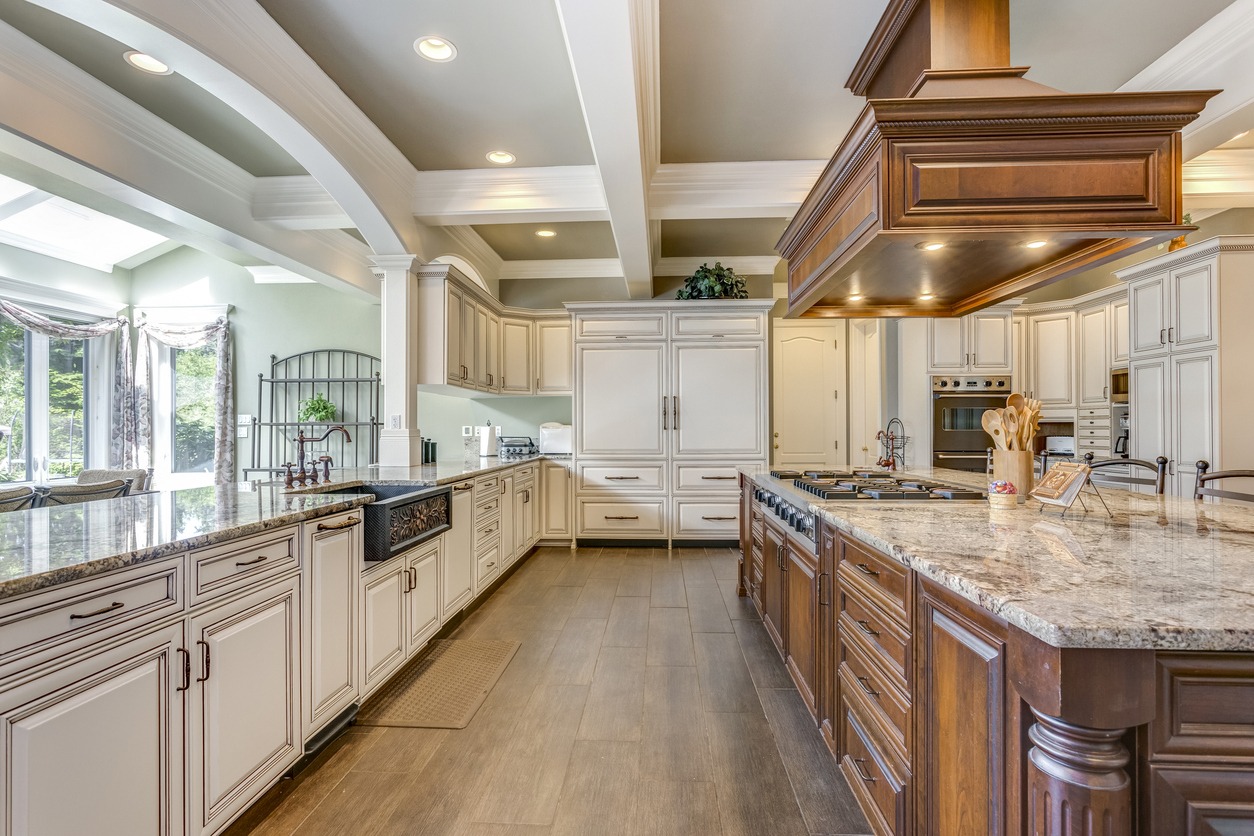Coffers in architecture are series of sunken panels with a boxed beam around them. They often form shapes like rectangles, squares, or octagons. Coffers are one of the most decorative types of ceiling treatments available, and they are also one of the most dramatic.
Coffered ceilings have no shape limitations. It means that they can be designed in an infinite number of patterns and shapes. They can also be made using different materials including various woods, plaster, medium density fiberboard, and high-density urethane foam. They are traditionally installed as an original feature at the time of a home’s construction, but they can also be added easily as part of a home’s renovation or enhancement.
Coffered ceilings are usually found in mansions, hotels, and as well as in historic buildings around the world. But they can also be found in modern homes and buildings in the present time.
History of Coffered Ceilings
With the remains of some old ceilings found in Rome in 2012, it shows that coffered ceilings date back as early as 79 AD. The term “coffered” describes the way the ceiling is built which is in boxes. The word “coffer” came from the Old French word “coffre” which means box or chest.
Coffers were originally built to reinvent the effect of carved stone ceilings that are expensive and difficult to produce. Aside from that, coffered ceilings have also been used historically to hide structural oddities in ceilings, make ceilings appear taller, and bear the load of domed roofs.
It was in the 1800s when coffered ceilings became more fashionable because the truly wealthy used them as a way to create a status symbol in their homes. Some of the famous residences that have been built with a coffered ceiling are The Biltmore Estate in North Carolina, The Frick House in Pittsburgh, The Studebaker Mansion in Indiana, and The Roman Pantheon.
Different Styles of Coffered Ceilings
Coffered ceiling treatments come in several different styles which can be used to give a room a lasting style. Here are some of them.
- Traditional Coffered Ceiling: This style of coffered ceiling features a square or rectangular grid pattern of box beams. Each coffer has a decorative crown molding installed inside them. You can also alter or customize this style to make it more unique. You can add ceiling tiles and paint to it depending on your preference.
- Rustic Coffered Ceiling: This style features a square or rectangular grid pattern of rough sawn or distressed wood beams. There are also no additional moldings added. This style is great to cover up old-fashioned popcorn ceilings. It will give a room the feel of country living.
- Geometric Coffered Ceiling: This coffered ceiling style features geometric patterns of different shapes such as hexagons, triangles, or octagons. They are in box beams with a decorative crown molding installed inside of each coffer. When it comes to coffered ceilings, there is almost no shape or design that will not work.
- Contemporary Coffered Ceiling: This coffered ceiling style features a minimalistic pattern of beams. They are constructed with framing lumber and are wrapped in drywall. This style will give your home a laid-back beach feeling. This is why it is also sometimes called the coastal style.
Benefits of Coffered Ceilings
Coffered ceilings can definitely add beauty to a certain space and they are able to draw the eye upwards in any room. But aside from the charm that it gives a certain room, there are other benefits you can get when you install a coffered ceiling in your home. Here are some of them.
Create Illusion of Space: Coffered ceilings are able to enhance the feeling of spaciousness to a room especially when you install narrow beams closer to the ceiling. Coffers can make ceilings appear taller than they really are and this can dramatically increase the grandeur of any room.
Absorb Sound: Coffered ceilings have sound-attenuating properties which help reduce echoes and unwanted noises. It helps the room become a conducive area to work in or to relax in as well.
Offer Aesthetic Appeal: Coffered ceilings can add a touch of class and elegance in any room. And together with some embellishments, it can transform a plain room into a visually appealing one.
Provides Sense of Structure: Coffered ceilings can work well with homes that have open floor plans because it can give a sense of structure and definition to areas that lack headers and walls.
Maintain Your Home’s Value: Coffered ceilings can also help maintain the historic value and authenticity of your home.
Works Well with High Ceilings: Coffered ceilings are also great for rooms with excessively high ceilings. They can make the room feel more cozy and comfortable.
Can Cover Ceiling Flaws: Coffers can also help hide some existing ceiling damage, design flaws, and as well as textures. This can include asbestos and popcorn ceilings.
Designing Coffered Ceilings
Consider the Scale: The size and height of your room will dictate the scale of your coffered ceiling. Larger, deeper coffers work well in spacious rooms with high ceilings, while smaller rooms benefit from shallower, more subtle designs.
Material Choices: Wood is a traditional material for coffered ceilings, offering warmth and a classic look. However, modern materials such as fiberboard, PVC, and even plaster can be used to achieve a similar effect, often at a lower cost and with greater flexibility in design.
Lighting Integration: Coffered ceilings offer unique opportunities for integrated lighting. Recessed lighting can be installed within the coffers, while pendant lights or chandeliers can hang from the center, creating a focal point.
Color and Finish: The beams and panels of coffered ceilings can be painted or stained to complement the room’s overall color scheme. Lighter colors can help make the room feel more spacious, while darker hues can create a cozy, intimate atmosphere.
Installation Considerations
While coffered ceilings can be a DIY project for skilled carpenters, professional installation is recommended to ensure structural integrity and a polished finish. It’s essential to consider the weight of the materials and the existing structure’s ability to support them.
Final Thoughts
Coffered ceilings can definitely add elegance and aesthetic appeal in any room or space. So, if you’re looking into adding drama and making a bold statement in your space, then a coffered ceiling might be the perfect choice for you. They are more than just a decorative element; they are a statement of craftsmanship and attention to detail. Whether you’re renovating a historic home or designing a new space, incorporating a coffered ceiling can elevate the aesthetic, add value, and enhance the acoustic properties of your environment. With thoughtful design and careful execution, a coffered ceiling can become the centerpiece of any room, imbuing it with a sense of elegance and architectural beauty.



